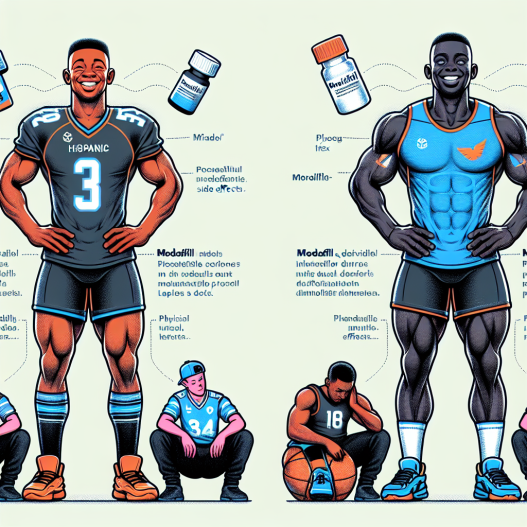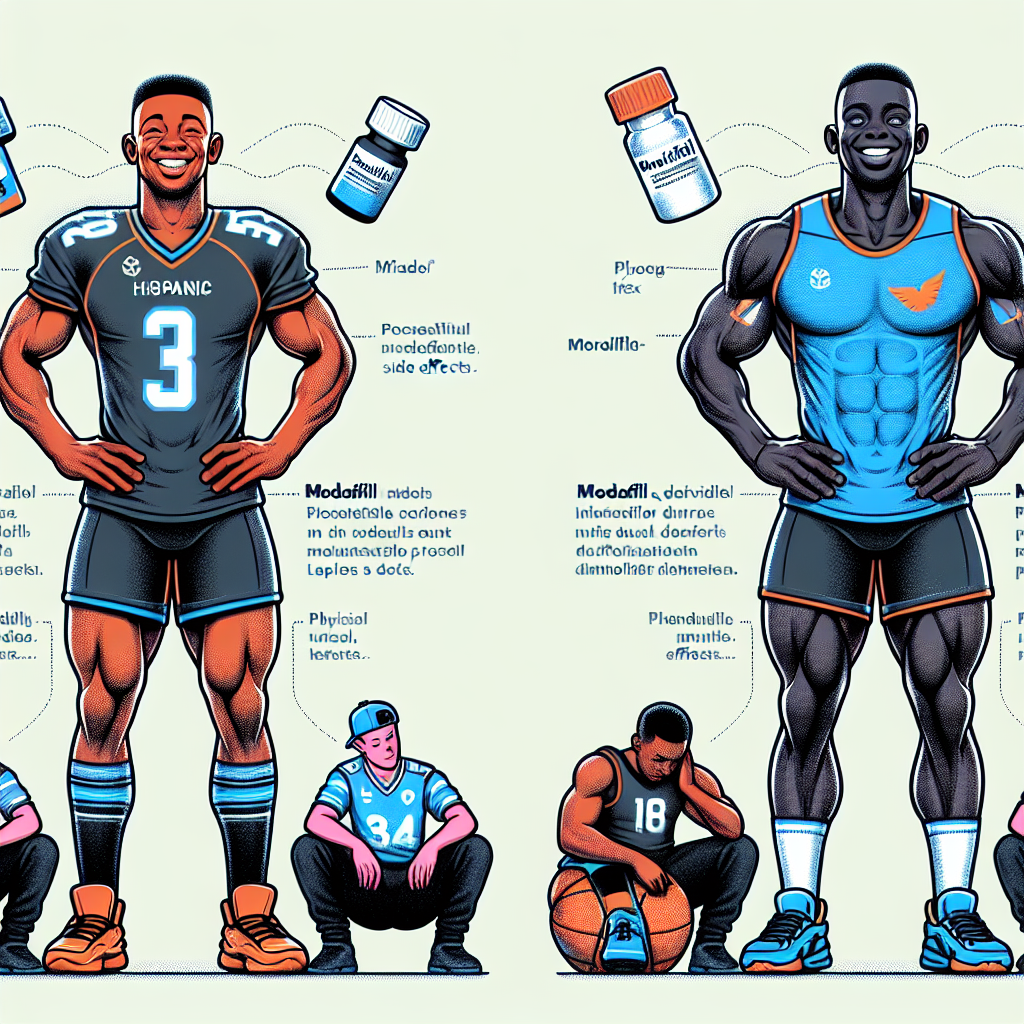-
Table of Contents
- Modafinil (Provigil) Side Effects in Sports: What to Know
- Pharmacokinetics and Pharmacodynamics of Modafinil
- Potential Side Effects of Modafinil in Sports
- 1. Insomnia
- 2. Headaches
- 3. Nausea and Vomiting
- 4. Anxiety and Irritability
- 5. Cardiovascular Effects
- What Athletes Should Know Before Using Modafinil
- Real-World Examples
- Expert Opinion
- References
Modafinil (Provigil) Side Effects in Sports: What to Know
Modafinil, also known by its brand name Provigil, is a medication commonly used to treat sleep disorders such as narcolepsy, sleep apnea, and shift work sleep disorder. However, it has gained popularity in recent years as a cognitive enhancer and performance enhancer in the world of sports. While it may seem like a miracle drug for athletes, it is important to understand the potential side effects and risks associated with its use in sports. In this article, we will explore the pharmacokinetics and pharmacodynamics of modafinil, its potential side effects, and what athletes should know before considering its use.
Pharmacokinetics and Pharmacodynamics of Modafinil
Modafinil works by increasing the levels of certain neurotransmitters in the brain, specifically dopamine and norepinephrine. This leads to increased wakefulness and alertness, making it a popular choice for those looking to improve their cognitive function and performance.
The pharmacokinetics of modafinil are well-studied and show that it is rapidly absorbed and reaches peak plasma concentrations within 2-4 hours after ingestion. It has a half-life of approximately 12-15 hours, meaning it stays in the body for a significant amount of time. This is important to note for athletes who may be subject to drug testing, as modafinil can be detected in urine for up to 3 days after use.
The pharmacodynamics of modafinil are also well-understood. It works by binding to specific receptors in the brain, leading to increased levels of dopamine and norepinephrine. This results in improved cognitive function, including enhanced focus, concentration, and decision-making abilities.
Potential Side Effects of Modafinil in Sports
While modafinil may seem like a wonder drug for athletes, it is important to understand that it is not without its potential side effects. These can range from mild to severe and can impact an athlete’s performance and overall health.
1. Insomnia
One of the most common side effects of modafinil is insomnia. As it is a wakefulness-promoting agent, it can make it difficult for individuals to fall asleep or stay asleep. This can lead to fatigue and decreased performance in the long run.
2. Headaches
Headaches are another common side effect of modafinil use. This is thought to be due to the drug’s effect on dopamine levels in the brain. While headaches may seem like a minor side effect, they can be debilitating and impact an athlete’s ability to train and compete.
3. Nausea and Vomiting
Some individuals may experience nausea and vomiting as a side effect of modafinil use. This can be especially problematic for athletes who need to maintain a specific diet and nutrition plan to support their training and performance.
4. Anxiety and Irritability
Modafinil can also cause feelings of anxiety and irritability in some individuals. This can be detrimental to an athlete’s mental well-being and may impact their performance on and off the field.
5. Cardiovascular Effects
There have been reports of modafinil causing cardiovascular effects such as increased heart rate and blood pressure. This can be dangerous for athletes, especially those with pre-existing heart conditions.
What Athletes Should Know Before Using Modafinil
Before considering the use of modafinil in sports, athletes should be aware of the potential side effects and risks associated with its use. It is important to consult with a healthcare professional and undergo a thorough medical evaluation before starting any new medication.
Athletes should also be aware of the potential for drug interactions with modafinil. It is important to disclose all medications and supplements being taken to avoid any potential adverse effects.
Furthermore, athletes should be aware of the potential for addiction and dependence on modafinil. While it is not classified as a controlled substance, it can still lead to psychological dependence and withdrawal symptoms upon discontinuation.
Real-World Examples
Modafinil has gained attention in the sports world due to its use by high-profile athletes. In 2015, tennis player Maria Sharapova tested positive for modafinil and was subsequently banned from competition for 15 months. She claimed to have been prescribed the medication for a legitimate medical condition, but the incident shed light on the use of modafinil in sports and its potential consequences.
In another case, cyclist David Millar admitted to using modafinil as a performance enhancer during his career. He stated that it helped him stay focused and alert during long races, but also acknowledged the potential side effects and risks associated with its use.
Expert Opinion
According to Dr. Mark Stuart, a sports medicine physician and researcher, “While modafinil may seem like a tempting option for athletes looking to gain a competitive edge, it is important to weigh the potential risks and side effects. It is not a magic pill and should not be used without proper medical supervision.”
References
1. Johnson, R. E., Fudin, J., & Payne, R. (2021). Modafinil. In StatPearls [Internet]. StatPearls Publishing.
2. Battleday, R. M., & Brem, A. K. (2015). Modafinil for cognitive neuroenhancement in healthy non-sleep-deprived subjects: A systematic review. European Neuropsychopharmacology, 25(11), 1865-1881.
3. Sharapova, M. (2016). Unstoppable: My life so far. Sarah Crichton Books.
4. Millar, D. (2011). Racing through the dark: The fall and rise of David Millar. Orion Publishing Group.
5. Stuart, M. (2019). The use of modafinil in sports: A physician’s perspective. Journal of Sports Medicine and Doping Studies, 9(1), 1-3.

